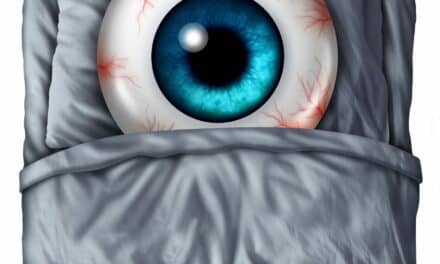A machine learning model can effectively predict a patient’s risk for insomnia using demographic and lifestyle data, physical exam results, and laboratory values, according to a new study published in PLOS ONE.
In the new work, researchers Samuel Y. Huang, MD, of Virginia Commonwealth University School of Medicine and Alexander A. Huang, MD, of Northwestern Feinberg University School of Medicine used the machine learning model XGBoost to analyze publicly available data on 7,929 patients in the US who completed the National Health and Nutrition Examination Survey.
The data contained 684 variables for each patient, including demographic, dietary, exercise, and mental health questionnaire responses, as well as laboratory and physical exam information.
Overall, 2,302 patients in the study had a physician diagnosis of a sleep disorder. XGBoost could predict the risk of sleep disorder diagnosis with a strong accuracy (AUROC=0.87, sensitivity=0.74, specificity=0.77), using 64 of the total variables included in the full dataset. The greatest predictors for a sleep disorder, based on the machine learning model, were depression, weight, age, and waist circumference.
The authors conclude that machine learning methods may be effective first steps in screening patients for sleep disorder risk without relying on physician judgment or bias.
“What sets this study on the risk factors for insomnia apart from others is seeing not only that depressive symptoms, age, caffeine use, history of congestive heart failure, chest pain, coronary artery disease, liver disease, and 57 other variables are associated with insomnia, but also visualizing the contribution of each in a very predictive model,” says Samuel Huang in a press release.
Photo 96414108 © Amenic181 | Dreamstime.com





